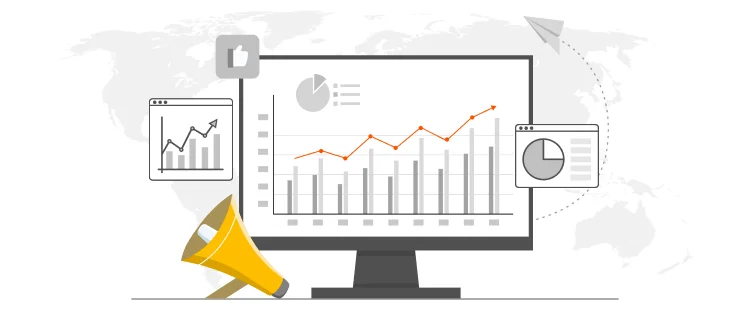By: Peter Edward Posted on Fri, 13-11-2015

Tomorrow is World Diabetes Day, a day when we stand together and try to bring awareness about this disease. Granted, Diabetes needs no introduction, but there are many people who are still unaware of it, or they choose to ignore it. When I say Diabetes does not need an introduction, I mean to draw attention to the fact that we all know a person who has diabetes. Every single person has a relative or friend who is diabetic. In every 11 adults, 1 adult is diabetic i.e. 415 million people in this world are suffering from diabetes.
By 2040, this count will be increased and in every 10 adults, 1 will be diabetic. This will take the official diabetic count to 642 million people. What is more alarming is the rate of infants born with diabetes, in every 7 births, at least 1 baby is affected by gestational diabetes. So the chances of these children living fulfilling lives are not only dim, they will also have many psychological effects that will impact their whole childhood.
This scary statistic is provided by the IDF Diabetes Atlas. The best we can do is to create an environment where everyone is aware of Diabetes and its risks. And the best way to do that is by creating multi-lingual medical pamphlets and brochures.
Even though many countries have their own doctors and medical staff, there are still many people who do not understand English, and even if they do, they do not understand it properly. Having multi-lingual medical pamphlets will allow them to understand the drug better and then prescribe the right drug for the disease.
Here are some more benefits of multi-lingual medical pamphlets.
These pamphlets have a much needed information about the drug and how it must be administered. This will allow the patients to use the drug in the way it must be administered. But more importantly, this will provide necessary information to the third world countries that are under developed. The doctors will know when, why and how the drug should be administered. This will help reduce the number of people dying of diabetes every single day.
In regions like the Caribbean, Africa and Middle East, there is a big danger of inaccurate interpretation of English pamphlets which leads to the wrong administration of the drug. This has even led to death of the patient. Having multi-lingual pamphlet is minimize the risk.
The whole point of World Diabetes Day is to spread awareness and bring information to people who are still unaware of the dangers of diabetes. The medical brochures and pamphlets will take the necessary information to the patients and the translated literature will allow them to learn the risks and benefits of the drug on their own.
The patients will be aware of the hazards of diabetes and they will be more prone to talk about their chances of getting the disease. They will be more susceptible to get tested and get their diagnoses. If they do not know about the risks, how are they going to protect themselves?
Having multi-lingual content for everything related to medicine, including medical devices, research equipment, healthcare software and technical instruments like blood glucose monitors will help people get the right medical attention for their diabetes related problems. Most of the time, your diabetes affects your other body parts like your kidneys. The doctors need to regularly check your other organs and parts to make sure that they are not affected by the disease.
Some of the tests the doctors suggest include:
Having proper translated materials for these tests and their equipment would help a lot. Taking help of a translation service provider will ensure that these manuals and directions are delivered right on time.
In order to simplify the process, the medical pamphlets must have these languages. These are the languages that are spoken widely in the world.
Having translated material in these languages will be helpful. Medical translation services are actively used all around the world, so using them for Word Diabetes Day awareness will be even better.

Many global companies, foreign governments and Iranian are hoping to see an increase in investment in Iran after declaring the
Read More
Artificial intelligence has taken a big space in almost every industry. There is also a widespread acceptance that AI is
Read More
Persuasion is all about manipulating other people behavior. At first it might sound immoral but it doesn’t have to be.
Read More
Now days everyone is searching for good ideas for their company they wanted to be more creative, they wanted to
Read More
Technology has now much diverse roots in this age of development. Now it is not wrong to say, that you
Read More
Localization is the practice of altering the functional properties of a product and also its characteristics. This is easily done
Read More
It is very important to know the fast and fearless front-facing trends of marketing your business in the digital age.
Read More
Nigerian Customer Purchasing Trends – All You Need To Know To Increase Your Sales! Online shopping is one of he many
Read More
Online Customer Purchasing Trends – Why the Polish Market Is Good For Your Sales? The Polish consumers are one of the
Read More


Document Translation
Professional document translation by native expertsApp Localization
Get more downloads by adapting your app for different target marketsVideo Translation
Multilingual translation and subtitling servicesWebsite Localization
Adapt your website into multiple contexts for global reachSoftware Localization
Adapt your software for global usersGame Localization
Reach new players with localized gameplayMTPE
Refine AI translations for natural fluencyBusiness Translation
Professional translation for business documents and websitesDTP & File Conversion
Professional DTP and File conversion, supporting multiple file formatsProofreading
Perfect your content with expert review© Copyright 2025 MarsTranslation